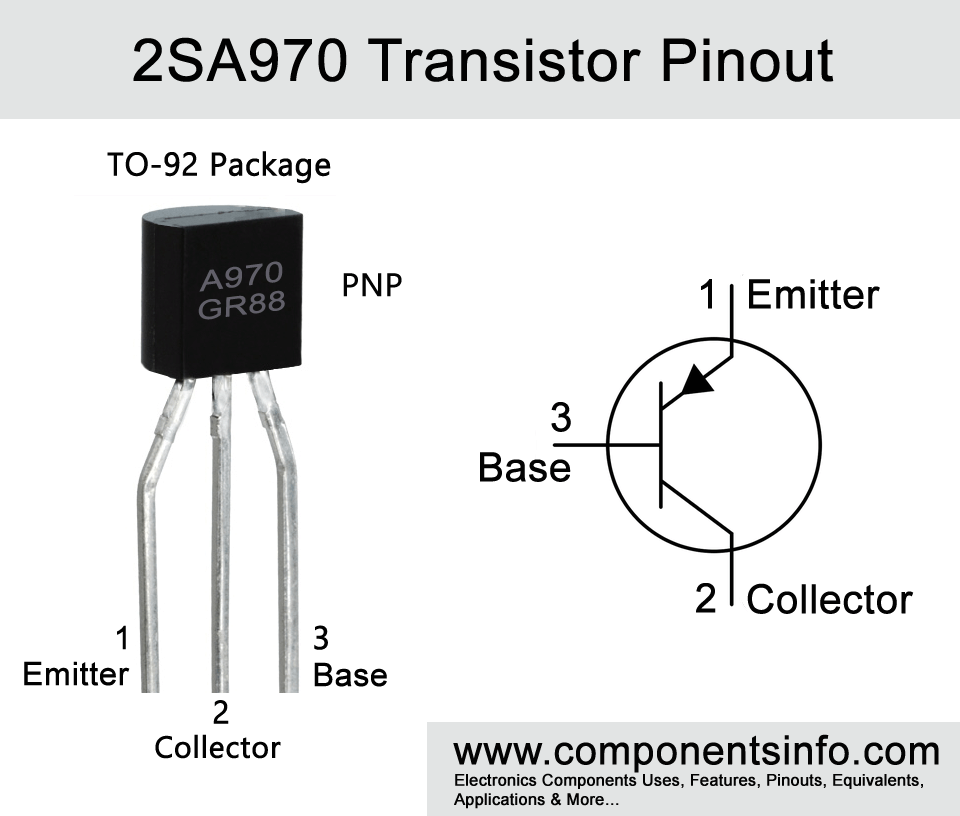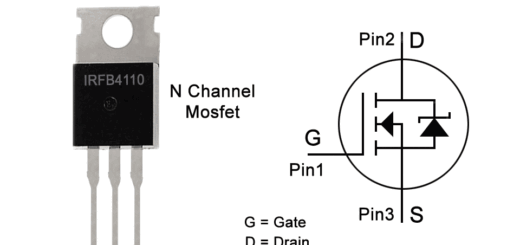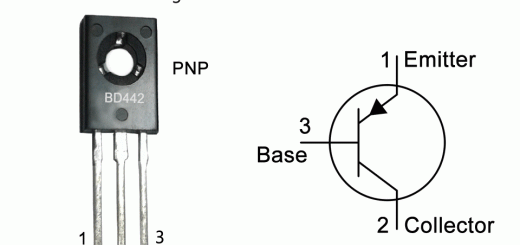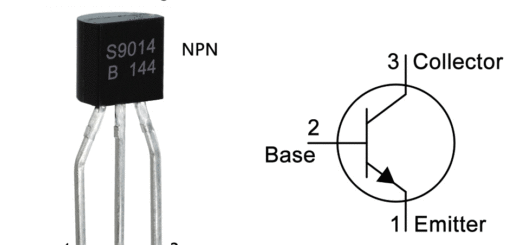2SA970 Transistor Pinout, Applications, Equivalents, Features, Characteristics and Other Details
2SA970 or A970 is a PNP transistor designed to use in audio applications. In this article we are going to discuss 2SA970 transistor pinout, applications, equivalents, features, characteristics and other useful details of this transistor.
Features / Technical Specifications:
- Package Type: TO-92
- Transistor Type: NPN
- Max Collector Current(IC): -100mA
- Max Collector-Emitter Voltage (VCE): -120V
- Max Collector-Base Voltage (VCB): -120V
- Max Emitter-Base Voltage (VEBO): -5V
- Max Collector Dissipation (Pc): 300 miliWatt
- Max Transition Frequency (fT): 100 MHz
- Minimum & Maximum DC Current Gain (hFE): 200 – 700
- Max Storage & Operating temperature Should Be: -55 to +125 Centigrade
NPN Complementary:
NPN Complementary of 2SA970 is 2SC2240
Replacement and Equivalent:
CSA970, 2SC3201, 2SB1212, 2SA1285 if the circuit in which you are using this transistor is operating under 12V to 18V then you can also use low voltage equivalents like BC557, BC556, BC558, BC559, 2SA1029, A733, A1015.
2SA970 Transistor Explained / Description:
2SA970 is a TO-92 package transistor designed to use in low noise audio amplifier applications but its good features and characteristics makes it a versatile transistor so it can be used in wide variety of other applications.
It has quite interesting features such as collector to emitter voltage of -120V which makes it ideal to use in high voltage circuits, it has high breakdown voltage which means the transistor is capable to handle sudden high voltages spikes without breakdown. The high breakdown features makes a transistor reliable and long term performer in the circuit. It has high DC current gain or hFE which is 200 to 700. The high current gain means that the transistor is capable to amplify low level signals with good gain with the combination of low noise this transistor can amplify low level signal very efficiently. Another good feature of the transistor is its transition frequency that is upto 100MHz this is another feature that makes it a good sound / audio amplifier because it has a wide frequency range to amplify. The transition frequency of 100MHz also makes it ideal to use in RF and radio circuits. The transistor has two different types of hFE classification so it has two different versions. One version comes with 200 to 400 hFE and can be determined with the code “GR” written below the part number and the other version comes with 350 to 700 hFE that can be determined with the code BL.
Looking at maximum ratings of the transistor the max collector to emitter voltage is -120V, max emitter to base voltage is 5V, max collector to base voltage is also -120, max collector current is 100mA, max base current is -20mA and max collector power dissipation is 300mW.
Where We Can Use It & How to Use:
As mentioned the transistor is designed to use in low noise audio amplification circuits but it is not limited to only these uses and can also be used wide variety of other applications. The using or operating procedure of this transistor is same as we use any other BJT transistor.
Applications:
Sensor Circuits
Switching Circuits
Audio amplifier
Audio preamplifier
Switching loads under 100mA
Darlington pairs
Different types of signal amplification
Safe Operating Guidelines:
For safe operating the transistor it is suggested to not operate the transistor to its absolute maximum ratings and stay 20% below from the max ratings. Therefore the maximum collector to emitter voltage is -120V so do not drive load of more than -96V. The max collector current is -100mA so stay under -80mA and store and operate the transistor at temperatures above -55°C and below +125 °C.
Datasheet
To Download the datasheet just copy and paste the below link in your browser.
https://www.datasheetq.com/web/viewer.html?file=//www.datasheetq.com/datasheet-download/Toshiba/220178/datasheet.pdf#page=1&_=1.0



